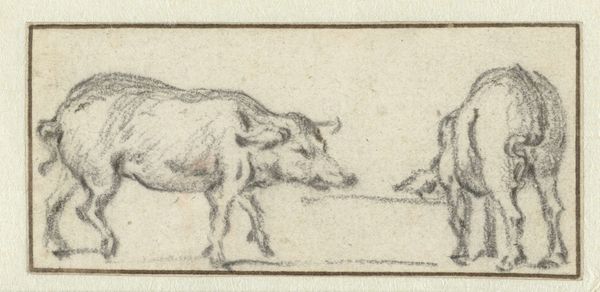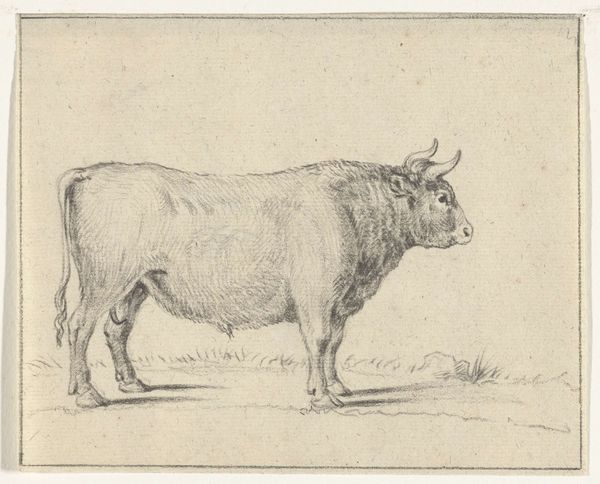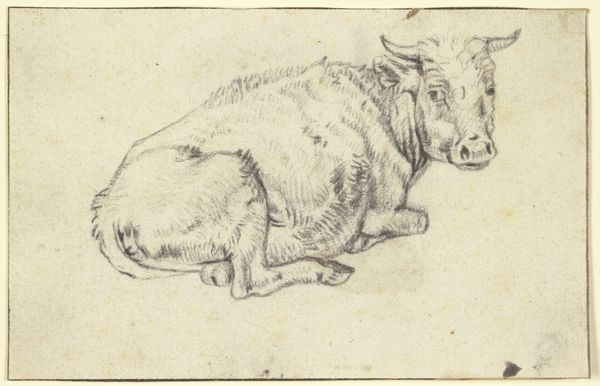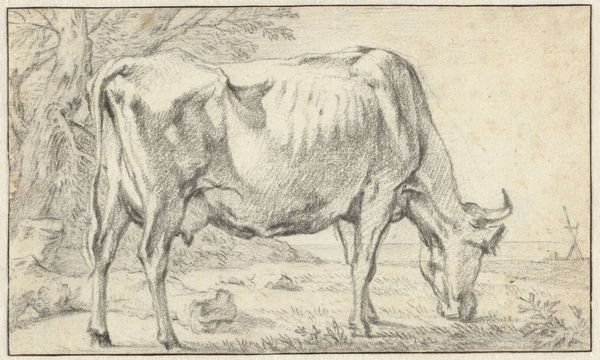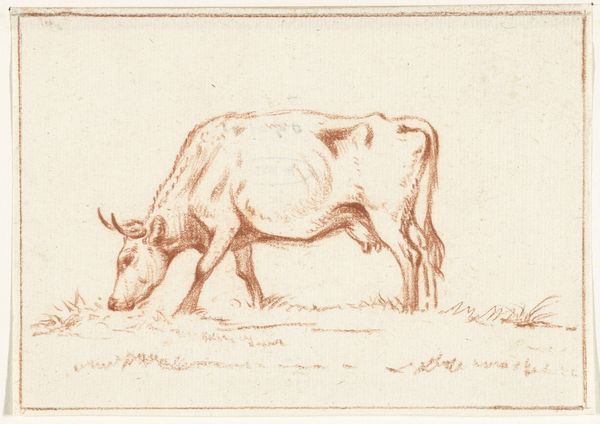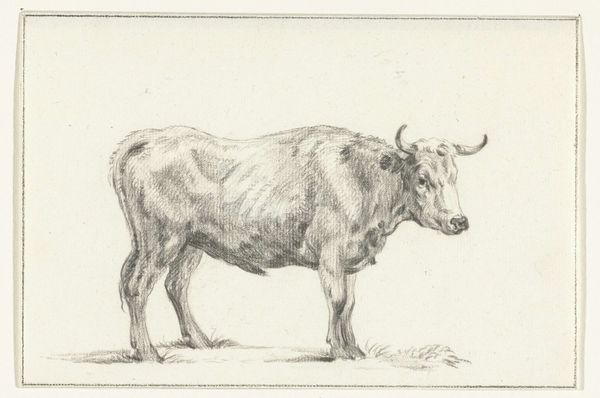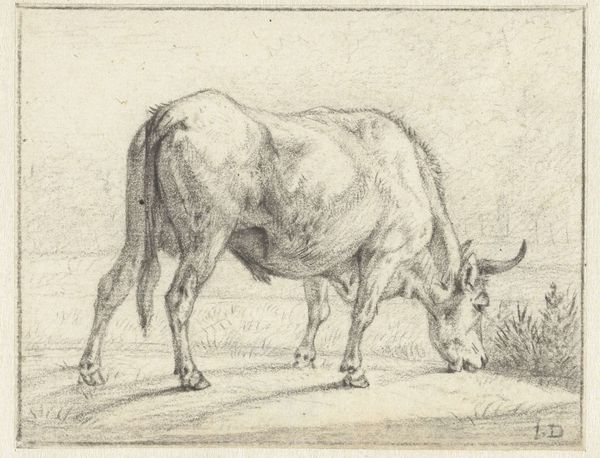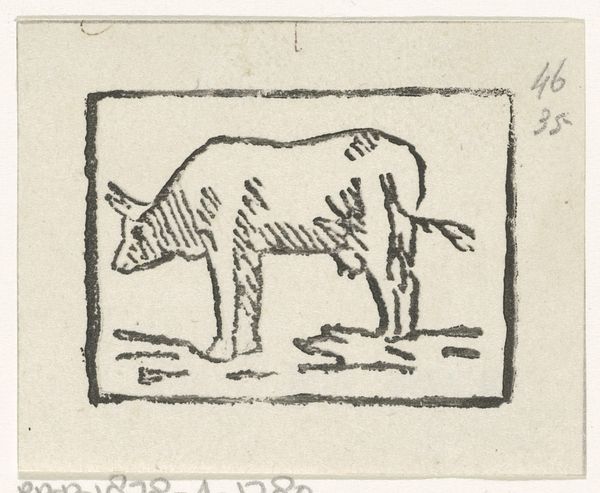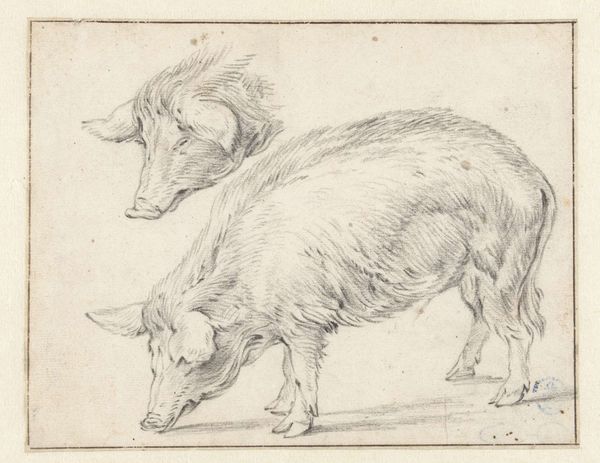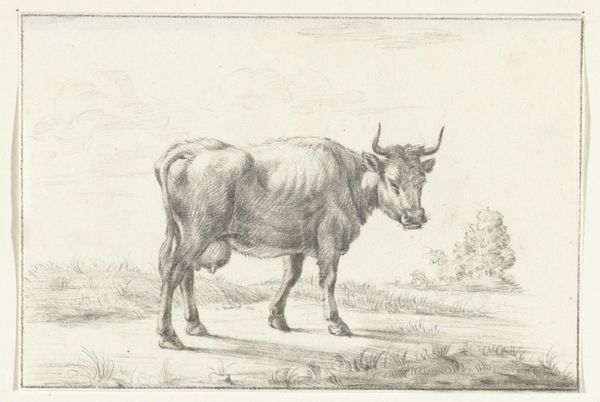
drawing, graphite
#
drawing
#
baroque
#
animal
#
pencil sketch
#
landscape
#
graphite
Dimensions: height 42 mm, width 106 mm
Copyright: Rijks Museum: Open Domain
Karel du Jardin rendered these three pigs with a humble graphite pencil. In this artwork, the pig is presented unglamorously, in its full animal nature, rooted in earthly existence. Throughout art history, the pig appears as a symbol laden with ambiguity. In ancient Greece, it was linked to fertility and sacrifice, whereas, in the Judeo-Christian tradition, it often represents impurity and gluttony. Consider, for instance, the medieval allegories where pigs embody the sin of greed. The presence of the pig in art is not linear, but cyclical. As seen in the works of artists like Bosch, who employed the pig to symbolize moral failings, these associations are deeply embedded in our cultural memory. Here, the pig touches something primal and instinctual in the viewer. It reveals subconscious fears and desires linked to the body and its appetites. Du Jardin’s pigs engage in a dance that reflects humanity’s complex relationship with nature and its own inner drives, reminding us that symbols are ever-evolving, reflecting our changing perceptions and anxieties.
Comments
No comments
Be the first to comment and join the conversation on the ultimate creative platform.
